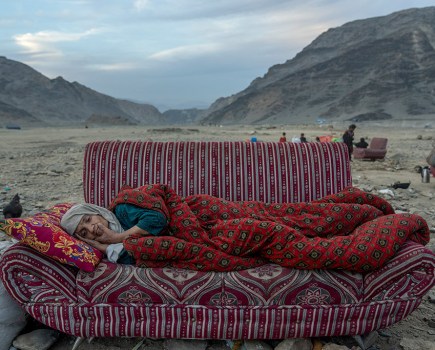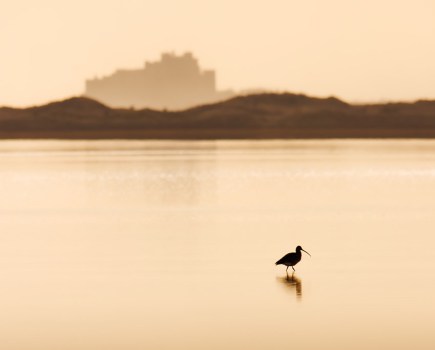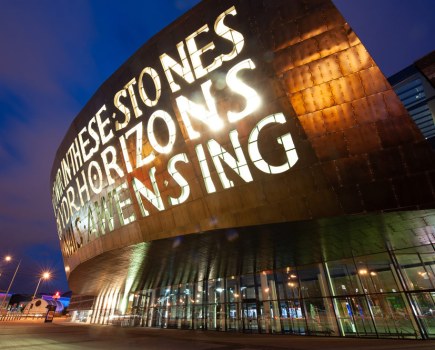Anja Niemi
Described by Channel 4 as ‘one of the most compelling artists of our times’, Amateur Photographer caught up with Anja before her latest show, Short Stories, debuts at this week’s Photo London.
The project saw Anja shoot 500 images with a Polaroid 600SE, editing them down to create eight short stories containing fictional characters, objects, landscapes and interiors – all in some way connected to each other.
The Norway-born photographer trawled flea markets, antique stores and auction for objects that were used as a platform to create characters and stories by reflecting on the lives of their imagined previous owners.
In what has become a trademark of her work, Anja photographs, stages and – as the model – acts out the characters portrayed in her images.
Short Stories by Anja Niemi, which showcases 140 of the resulting Polaroids, will run at Photo London at Somerset House from 19-22 May, before moving to The Little Black Gallery in Chelsea from 26 May-16 June. A book of the same name is published by Jane & Jeremy and available at thelittleblackgallery.com.
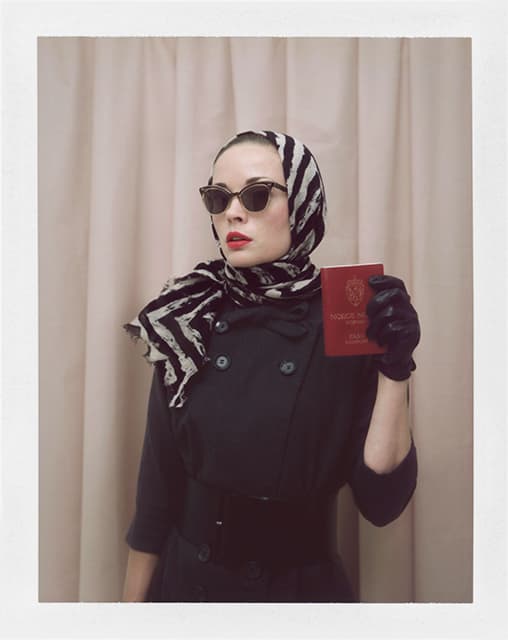

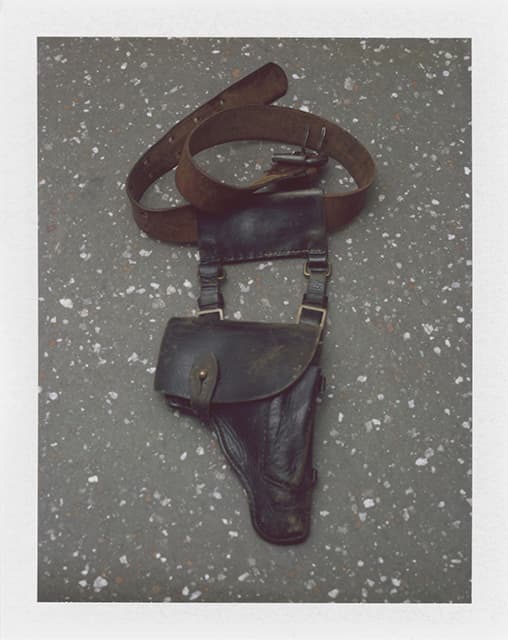

An unreturned Union Bank bag led Anja to create a story about an unlawful fictional character called Mona. Objects used in this series also include a Russian gun holster and a police booking sheet ‘with fingerprints’
How long did it take you to create these eight short stories with fictional characters?
The series was meant to be a small side project to do during the summer, but it ended up lasting 12 months. The stories just grew into something much bigger than first anticipated. I had forgotten how much I enjoy measuring light, timing Polaroids and the excitement of peeling them apart. I will miss it if I don’t get to do it again.
You must have a vivid imagination to create scenarios from the objects you came across. Would you like to have taken up writing detective novels if you hadn’t pursued photography?
I suppose imagination was never one of my weaknesses, but it took me a while to find out how to use it. I was never very good with words, so I needed a way to tell stories without them.
Where did you find objects such as the bank deposit bag and police booking sheet that appear in Short Stories?
I always have an eye open for costumes and props at vintage stores, auctions, flea markets and antique stores. I am often amazed at the things people put up for sale! I get most excited about the items that share something about its previous owner, like make-up jars with fingerprints or well used rhinestone-embellished eyelashes. They are like instant character triggers!
How important is it for you to work alone?
It’s what I am used to. When I work I want to enjoy myself and not be self-conscious, I am just more comfortable alone.
How long do you spend setting and photographing each shot and what is your priority?
With the Polaroids it could be anything from a few hours to a full day per image. Although small, I still wanted to treat them as I would any other image I work on. In some ways their size made it even more satisfying to take my time on them.
What lighting do you use for your work?
For the Polaroids series I used my old Metz flashgun, and as much natural light as possible.
Where did you obtain the Polaroid 600SE? Did you already have one, or did you acquire one solely for this project?
I had always wanted this specific camera, and finally bought one when I started the project. I used to work with a Polaroid back on my film Hasselblad and I always loved it, but the camera doesn’t fill the entire frame of the Polaroid as this one does!
Where were the photographs taken?
Most of the portraits and objects are taken in my studio and I did some landscapes in Norway. I made two trips, one to an apartment in Rome for my character Jean, and I rented a cabin in the countryside in Sweden for Sylvia and Darlene. It was a seven-hour drive, but well worth it for the beautiful 1930s wallpaper!
Why did you decide to use Polaroid film – what attracted you to this idea?
I wanted to work on something that would be slow to make and time consuming to look at. It has become so easy to take a good picture in a matter of seconds, and even faster to scroll through artwork on a screen. The Polaroids were a break from all that. I did not shoot anything digital during that year.
Out of the 140 Polaroids in the show we only selected a few to be published online, so once the show is down it’s over. My intention from the start was for them to live on in book form instead. The book Short Stories will accompany the show and was created by Jane & Jeremy books.

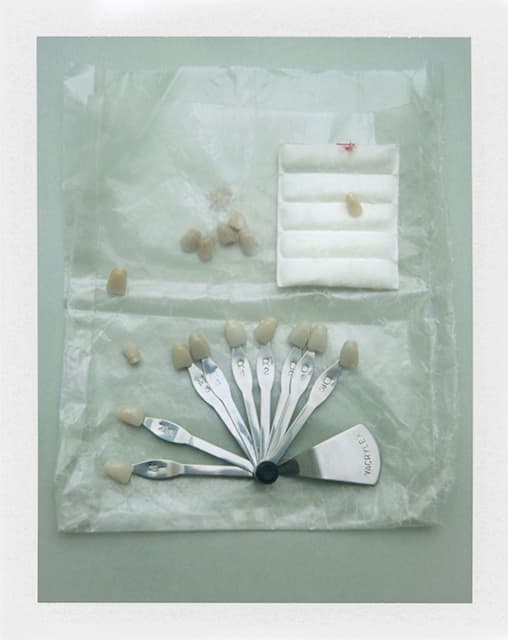
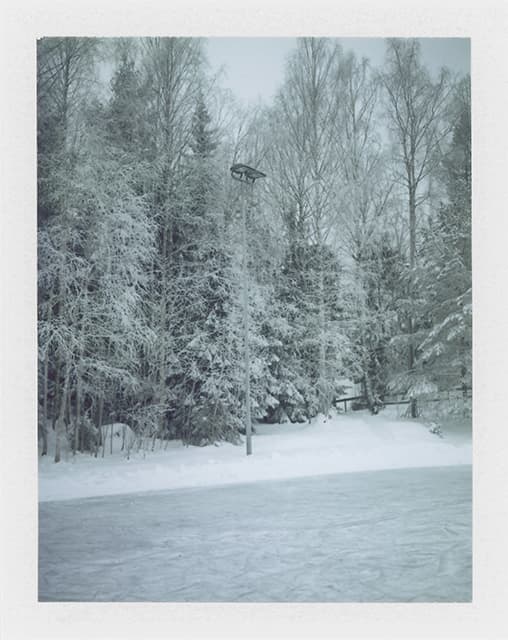
This series, called ‘Susan’, features images of surgical instruments, a frozen lake, a set of acrylic teeth and a portrait of an ice skater
As an artist, do you think it’s a big shame that Polaroid and Fuji peel-apart film was discontinued?
It’s hard to believe really. I still hope that someone will come along and save it. If not, it’s the end of an era.
How difficult was it to edit the 500 shots to just eight short stories?
It was a pretty natural process, as I was editing along the way, so once I was done shooting the stories were formed.
What upcoming projects are you working on now?
I am in the middle of producing my next series, which will be shown first in January 2017 at Photo San Francisco in the US. Most of the series will be shot in Italy, where I will spend my summer. For the past six months I have been forming the story, building the character’s wardrobe, collecting her belongings and organising all the locations. Now I am looking forward to playing it all out.
When did you first take up photography and what attracted you to pursue it as a career?
Once I had discovered a way to tell tales without words I never looked back. I was around 18 – so over 20 years ago!
How would you most like to be remembered, in photographic terms?
I do think about that sometimes, what I am leaving behind. I find it hard to answer though.
What is your favourite photographic accessory?
I don’t tend to get too exited about my photographic equipment, but I always loved the first camera I bought, a Hasselblad 501.
What cameras have you mainly used for your work, prior to the Polaroid project?
Hasselblad and Canon
What was the most important thing you learnt from your time studying at the London College of Printing?
I think what I appreciate the most about my studies were the lecturers both at Parsons [School of Design in Paris and New York] and at the London College of Printing. I might not have fully understood my luck at the time, but having guest speakers such as Duane Michals, and Christo and Jeanne-Claude, is pretty special.
How do you get exciting ideas for future projects – where did you find inspiration?
Previously, I made projects inspired by objects, people, clothes or places. This time [the project Anja is about to shoot], everything started with words told by a pioneering Italian actress in the 1920s. I literally saw the whole series immediately after reading them. Ideas can come from anything!
• The Impossible Project began remaking Polaroid-compatible film a few years ago and has just launched its own instant camera that accepts Polaroid 600-type film – Ed.




Anja began her project by photographing the contents of a suitcase that had led to a previous series called ‘Darlene and Me’ in 2014. She then created a new portrait of a Darlene as the ‘Beauty Counsellor’. The case, filled with beauty samples from 1959, led Anja to create characters and stories based on objects.
[All images © Anja Niemi]




